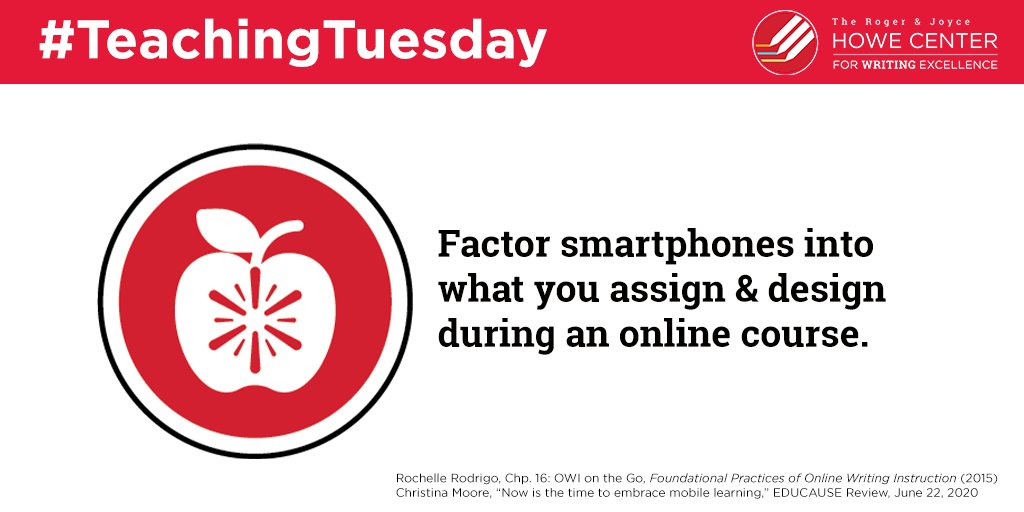There’s no denying the ubiquity, and utility, of smartphones, and fact is students are using them for coursework—whether F2F, hybrid, or online. #TeachingTuesday
This is a good thing! Think of all the added learning opportunities when you can carry a course in your pocket. (1/8)
This is a good thing! Think of all the added learning opportunities when you can carry a course in your pocket. (1/8)
Structuring courses with mobile in mind is now a central aspect of universal design, especially for online courses. For some students, a smartphone will provide their most reliable, or their most preferred, way of accessing the internet. (2/8)
When it comes to factoring mobile into your class, first thing’s first—consider how you use your own smartphone for learning. If you regularly listen to podcasts to learn more about a topic you’re interested in, why not look for podcasts to assign to students in your class? (3/8)
With course content you create (i.e., Slides), try to write less for better readability on a small screen. Also check that links & multimedia function similarly on desktop & mobile. A web version of an article, for example, is more universally accessible than a PDF. (4/8)
Embrace that students will do course writing on their smartphones. It’s actually a great reflection of the writing process. Those ideas a student jots down in their notes app or voices over in their audio recording app can develop well into bigger writing projects. (5/8)
And we’ll leave you with this: survey your students! Get a sense of how they use their smartphones for recreation and for learning, and get feedback on how course materials are being used in mobile. (6/8)
Insights for this thread came from 1) "OWI on the Go," a chapter by @rrodrigo in Foundational Practices of Online Writing Instruction
(access the open-source book from @WACClearingHous here: http://wac.colostate.edu/books/perspectives/owi/">https://wac.colostate.edu/books/per... ) (7/8)
(access the open-source book from @WACClearingHous here: http://wac.colostate.edu/books/perspectives/owi/">https://wac.colostate.edu/books/per... ) (7/8)
and 2) “Now is the time to embrace mobile learning,” an article from @fontanamoore in @EDUCAUSEreview.
Read it here: http://er.educause.edu/blogs/2020/6/now-is-the-time-to-embrace-mobile-learning">https://er.educause.edu/blogs/202... (8/8)
Read it here: http://er.educause.edu/blogs/2020/6/now-is-the-time-to-embrace-mobile-learning">https://er.educause.edu/blogs/202... (8/8)

 Read on Twitter
Read on Twitter


